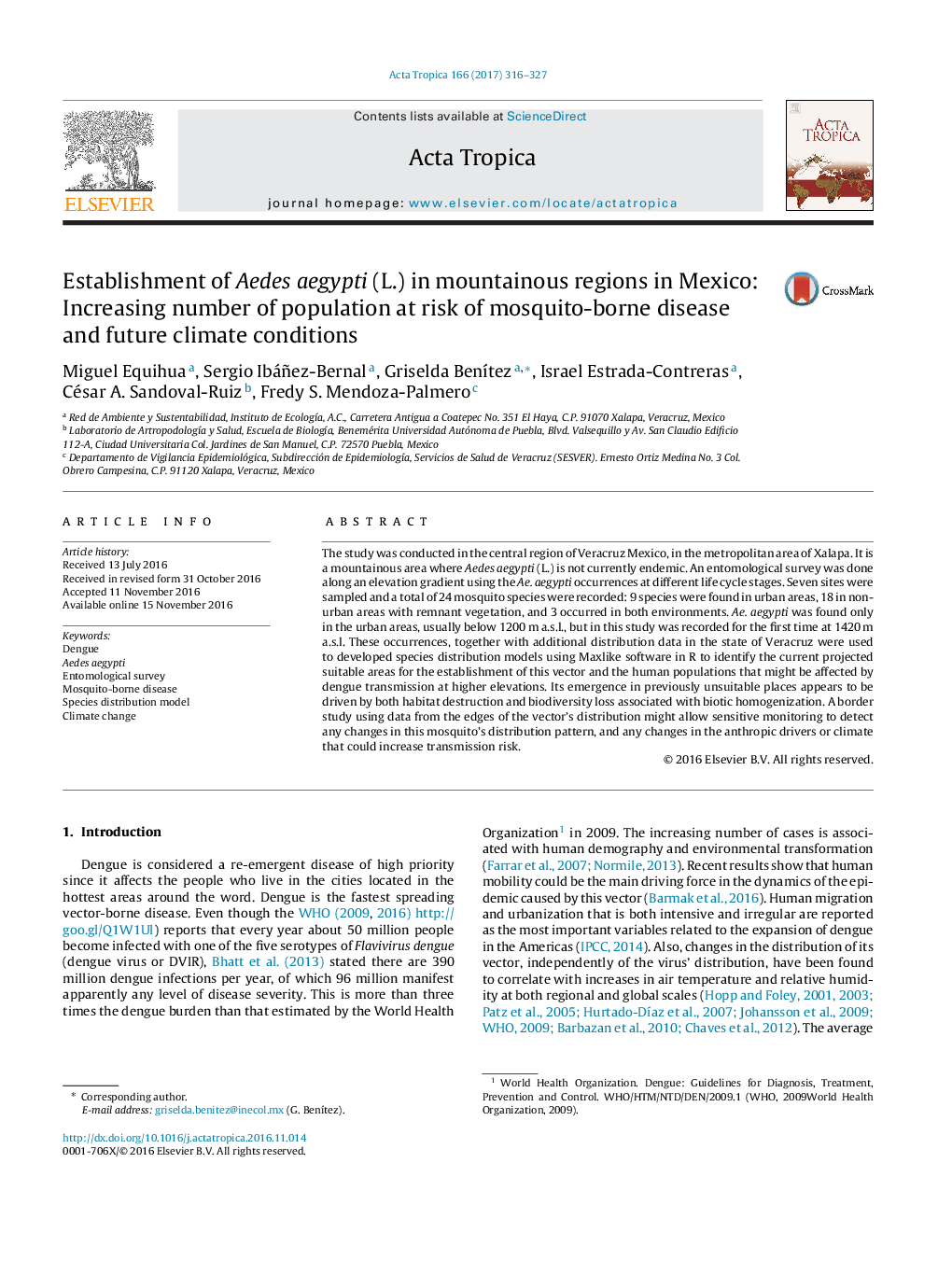| کد مقاله | کد نشریه | سال انتشار | مقاله انگلیسی | نسخه تمام متن |
|---|---|---|---|---|
| 5670915 | 1592758 | 2017 | 12 صفحه PDF | دانلود رایگان |

- First time record in the state of Veracruz of Ae. aegypti at an elevation of 1420Â m a.s.l.
- Entomological survey showed differences in mosquito species assemblages between rural and urban areas.
- Ae. aegypti was found now at higher elevations, exposing more people to dengue transmission.
- The return and emergence of dengue is driven by habitat destruction and biotic homogenization.
- Our monitoring reveals a climate change signal that could increase transmission risk in currently temperate areas.
The study was conducted in the central region of Veracruz Mexico, in the metropolitan area of Xalapa. It is a mountainous area where Aedes aegypti (L.) is not currently endemic. An entomological survey was done along an elevation gradient using the Ae. aegypti occurrences at different life cycle stages. Seven sites were sampled and a total of 24 mosquito species were recorded: 9 species were found in urban areas, 18 in non-urban areas with remnant vegetation, and 3 occurred in both environments. Ae. aegypti was found only in the urban areas, usually below 1200Â m a.s.l., but in this study was recorded for the first time at 1420Â m a.s.l. These occurrences, together with additional distribution data in the state of Veracruz were used to developed species distribution models using Maxlike software in R to identify the current projected suitable areas for the establishment of this vector and the human populations that might be affected by dengue transmission at higher elevations. Its emergence in previously unsuitable places appears to be driven by both habitat destruction and biodiversity loss associated with biotic homogenization. A border study using data from the edges of the vector's distribution might allow sensitive monitoring to detect any changes in this mosquito's distribution pattern, and any changes in the anthropic drivers or climate that could increase transmission risk.
The elevation range increase recorded in Ae. aegypti's distribution and its projected increase under climate change scenarios. In times of climate change, studies like this one on boundary conditions are key for developing adaptation strategies.191
Journal: Acta Tropica - Volume 166, February 2017, Pages 316-327